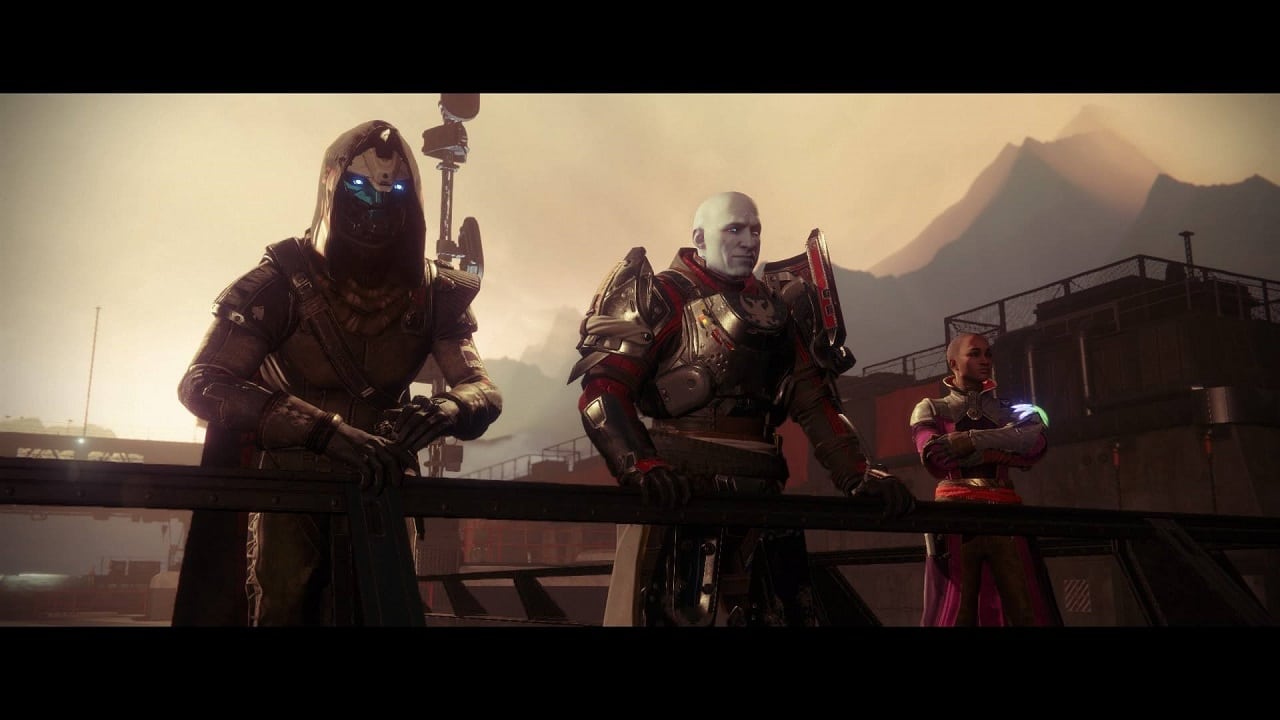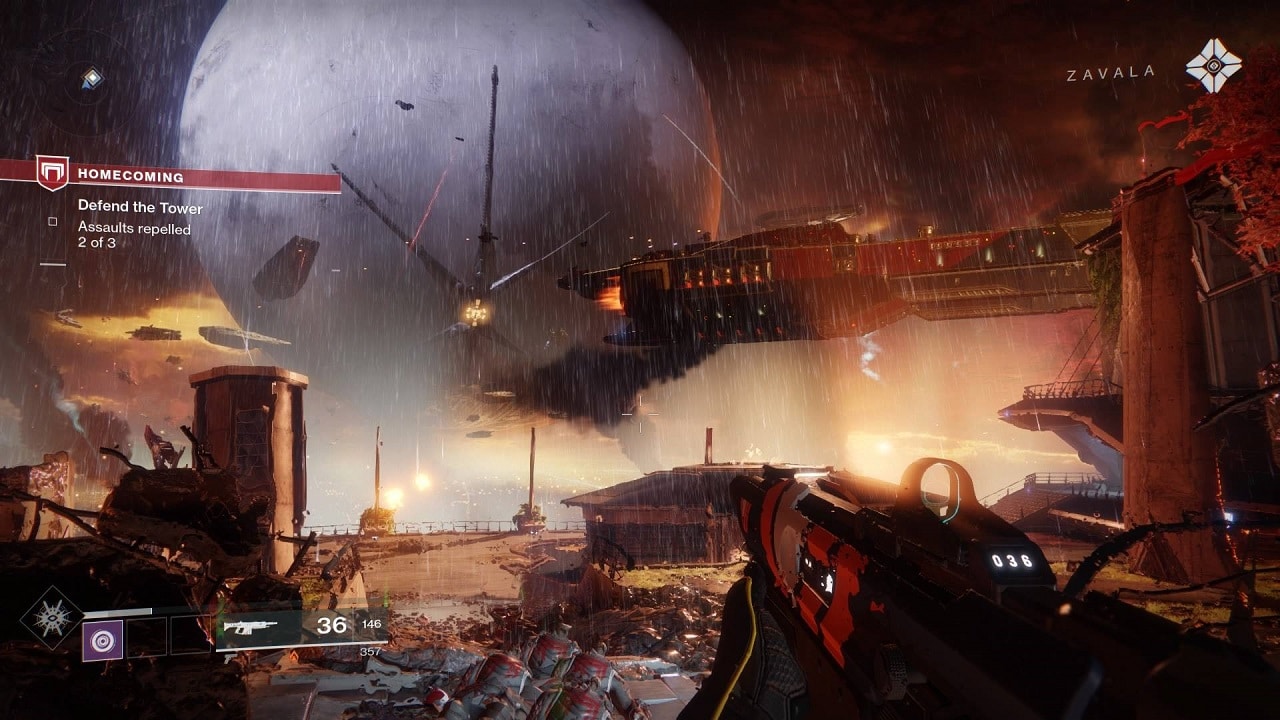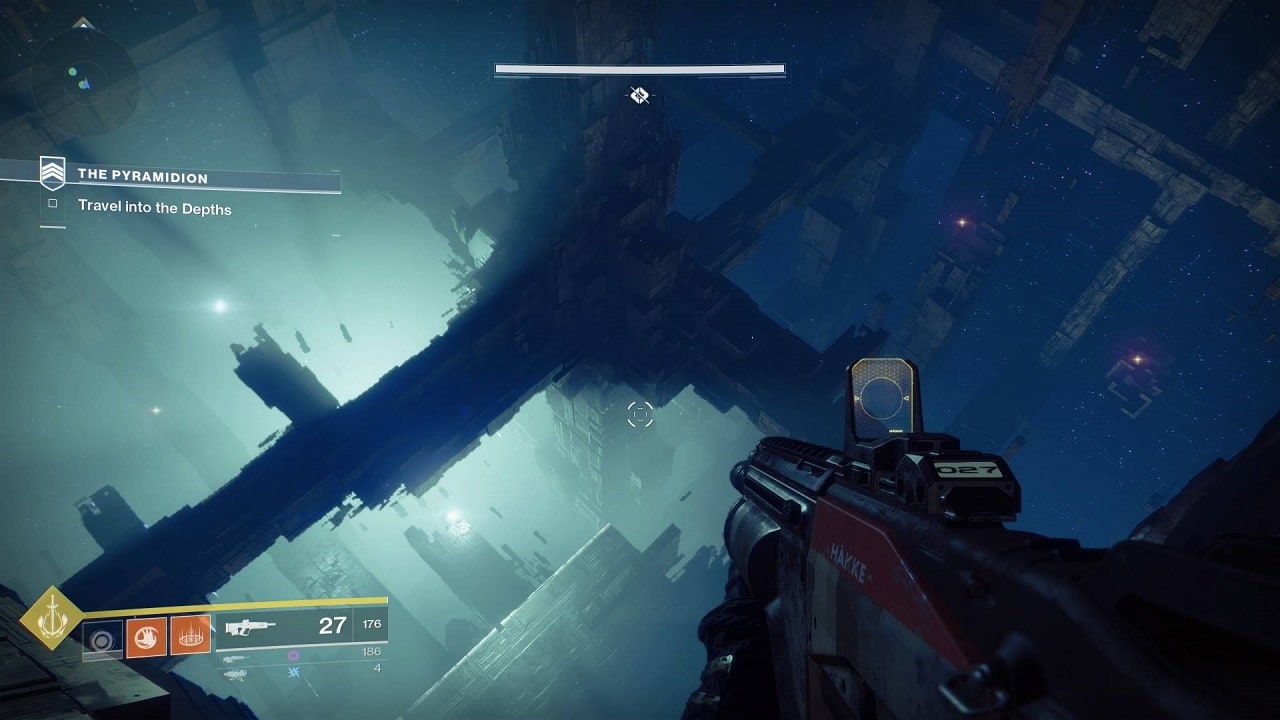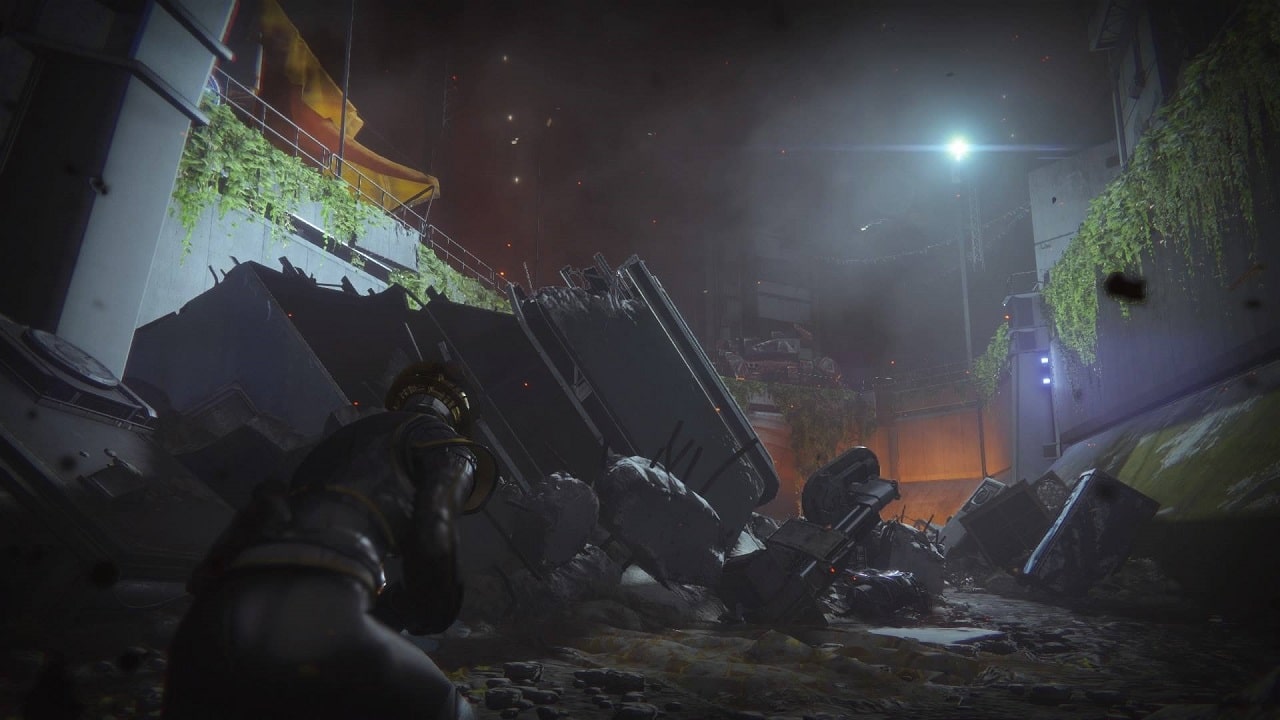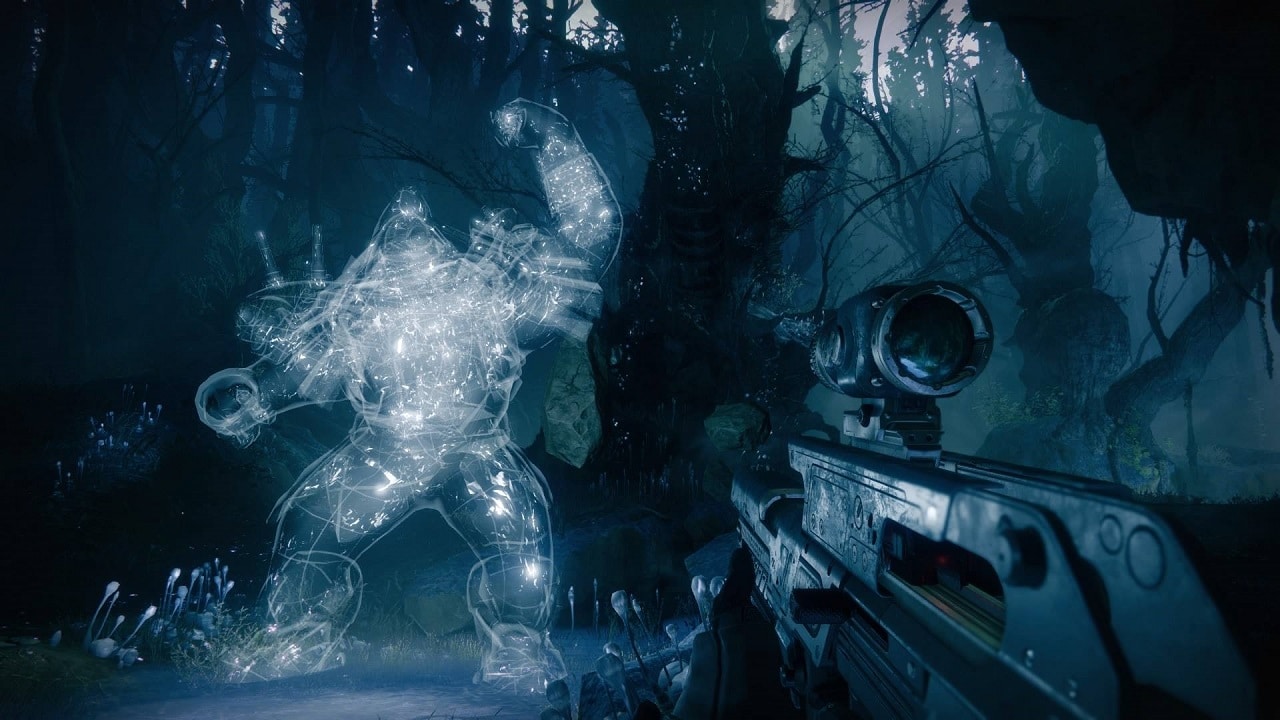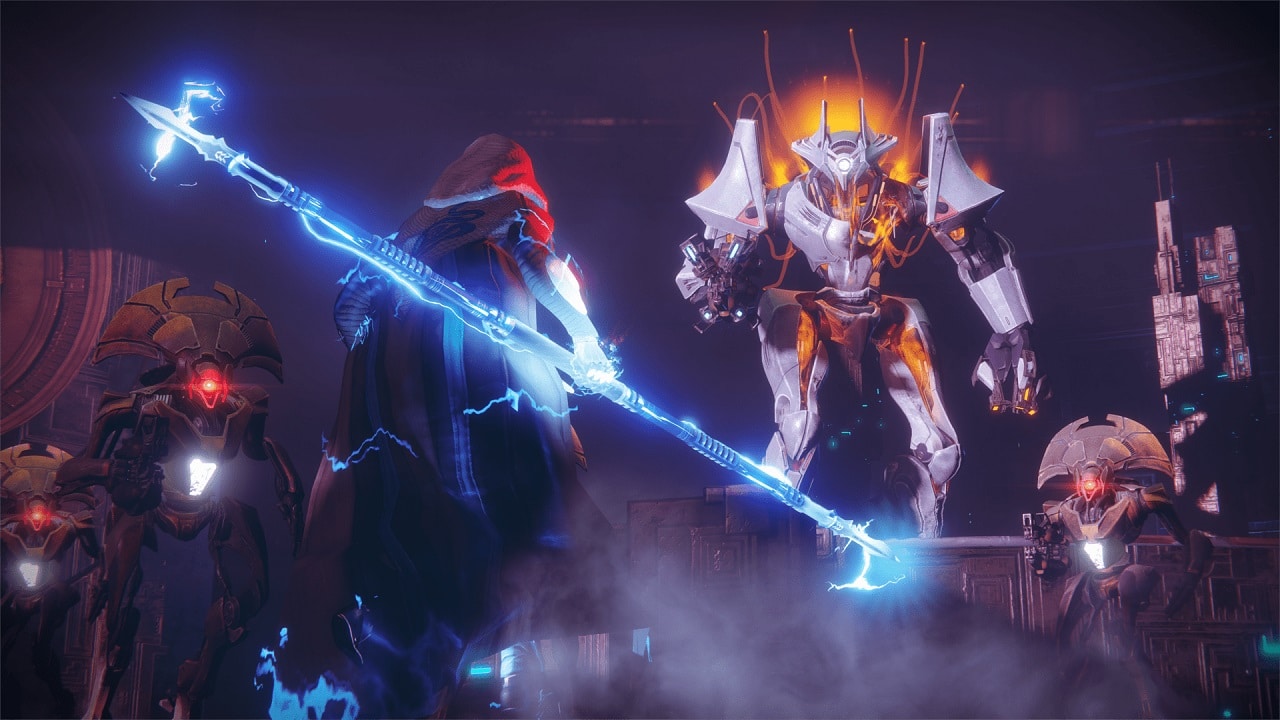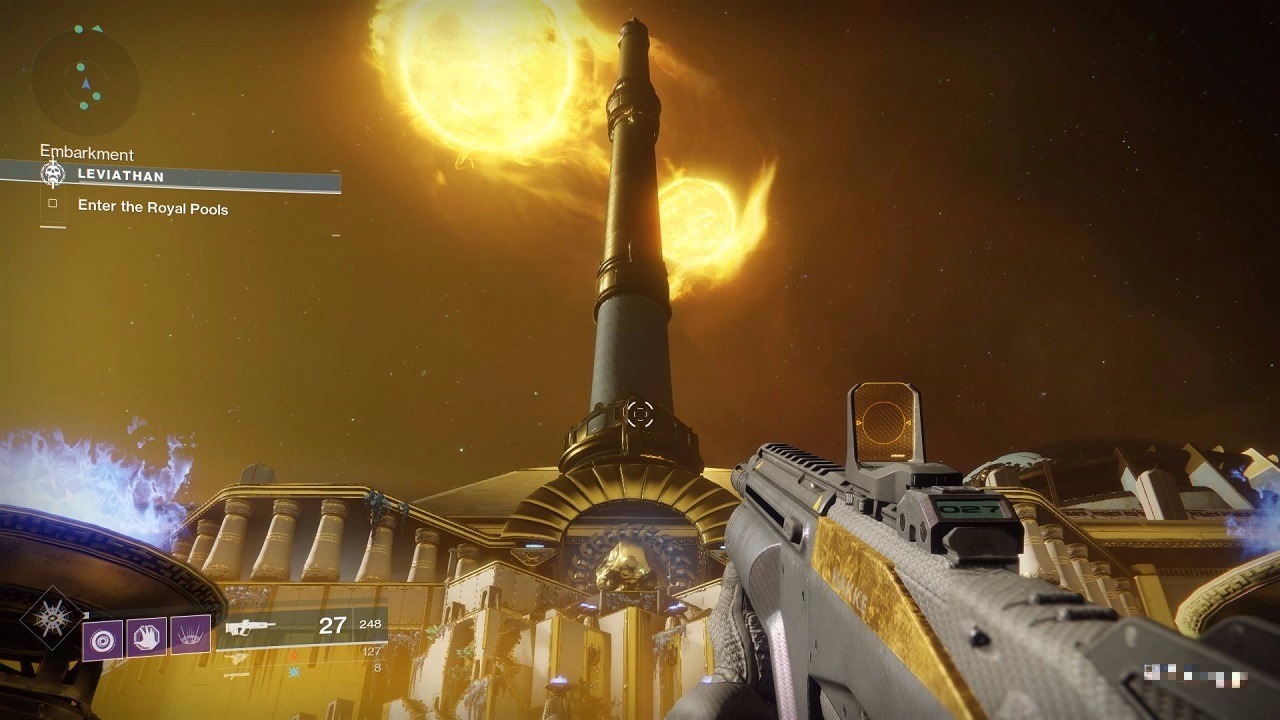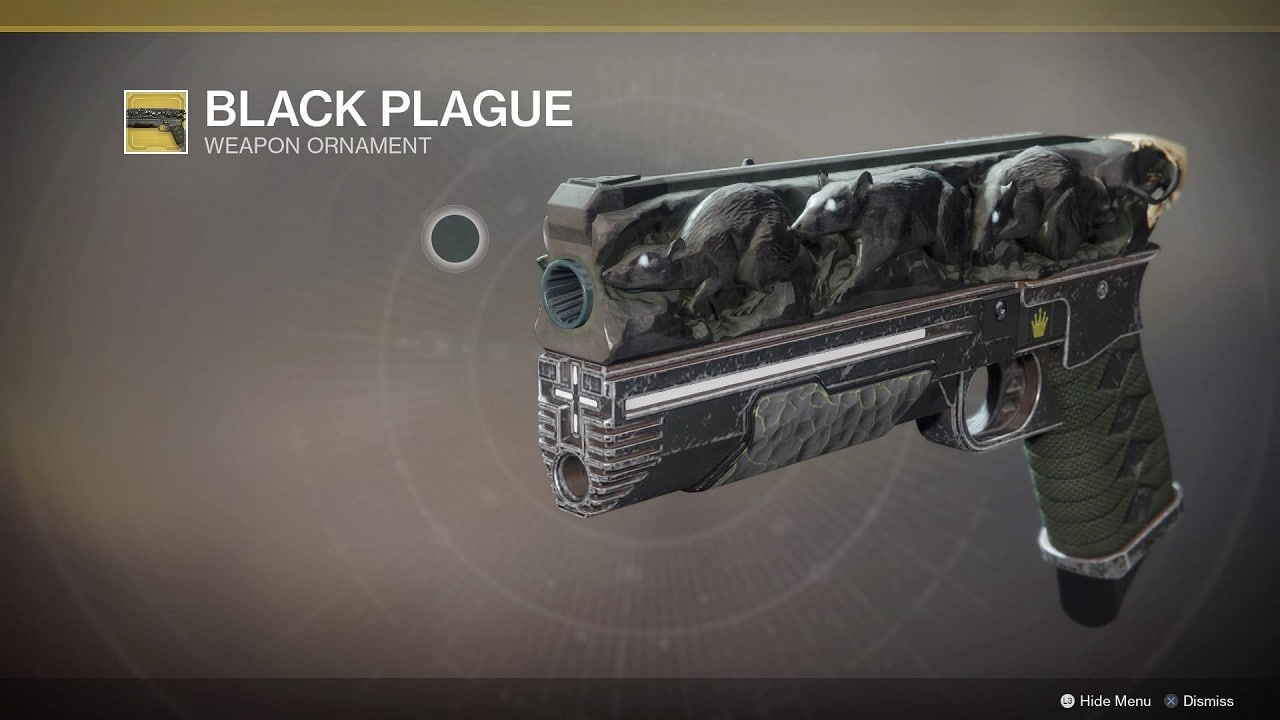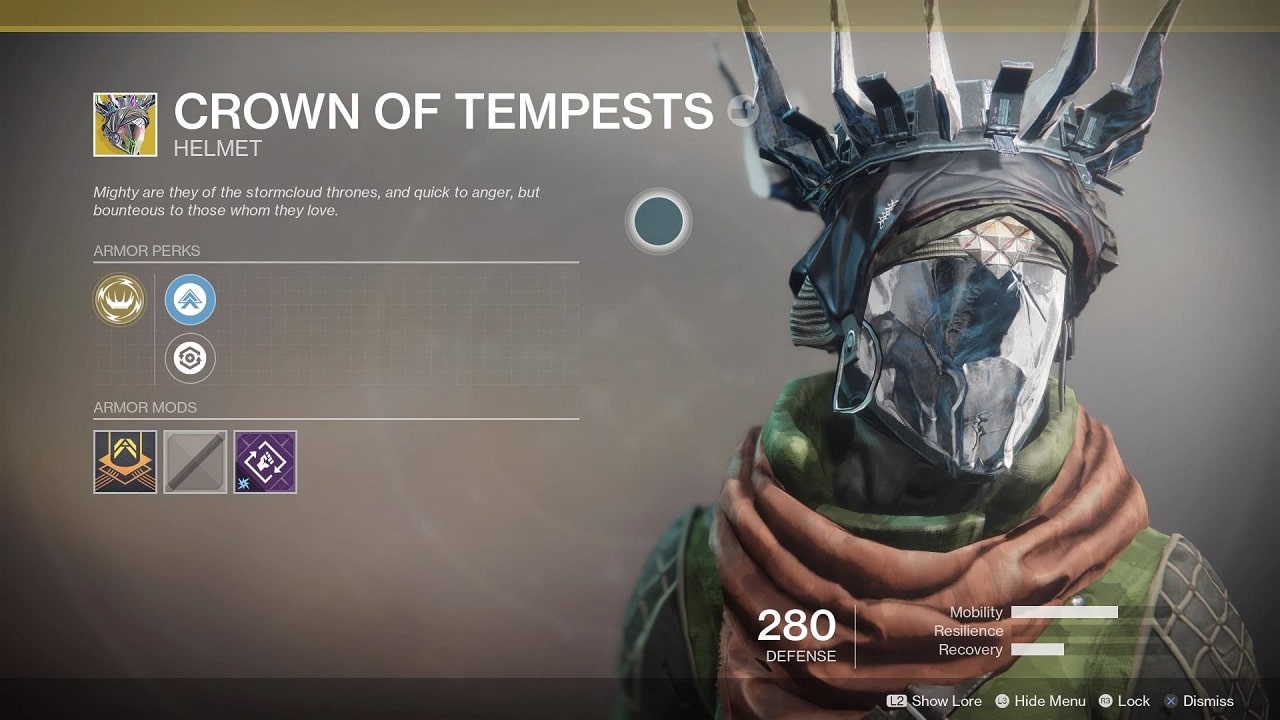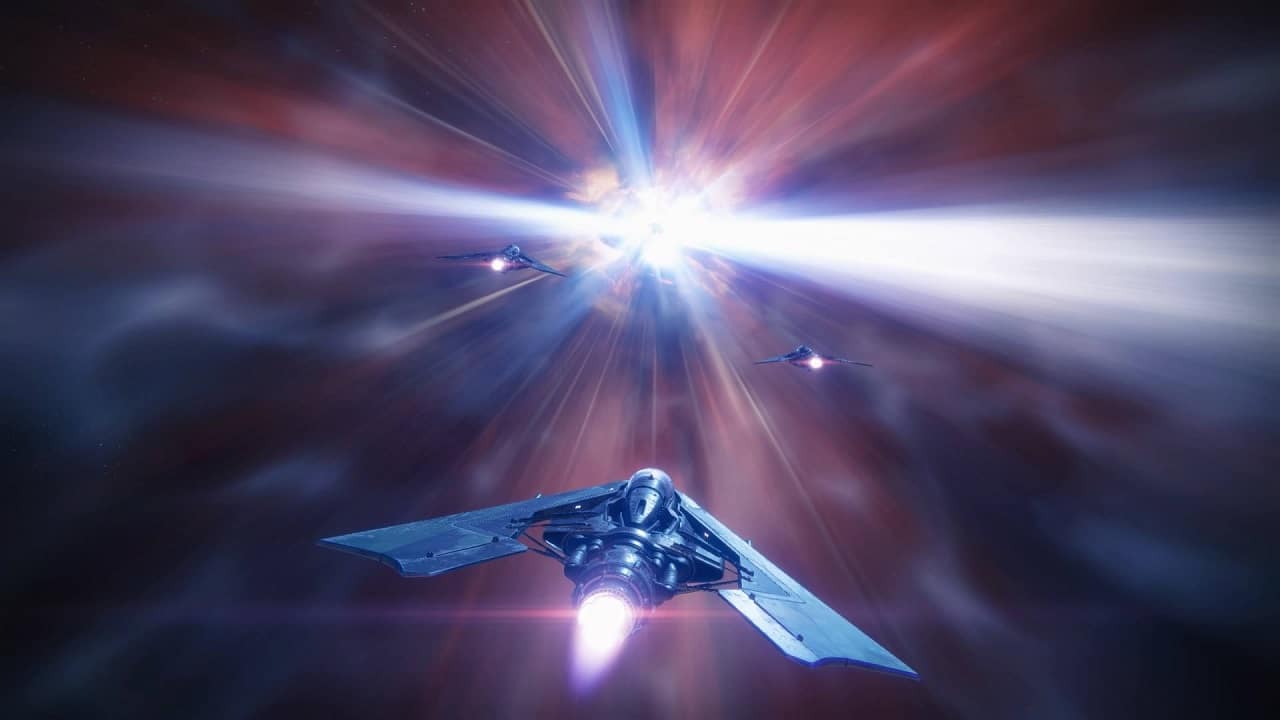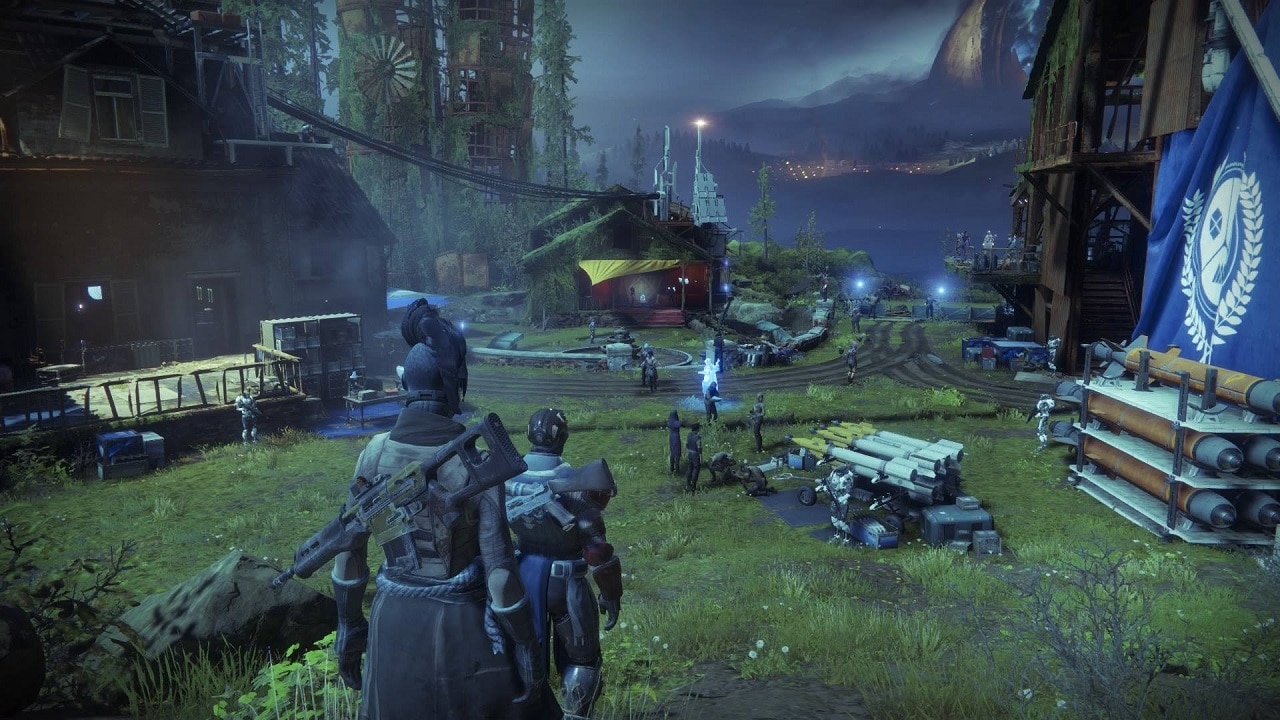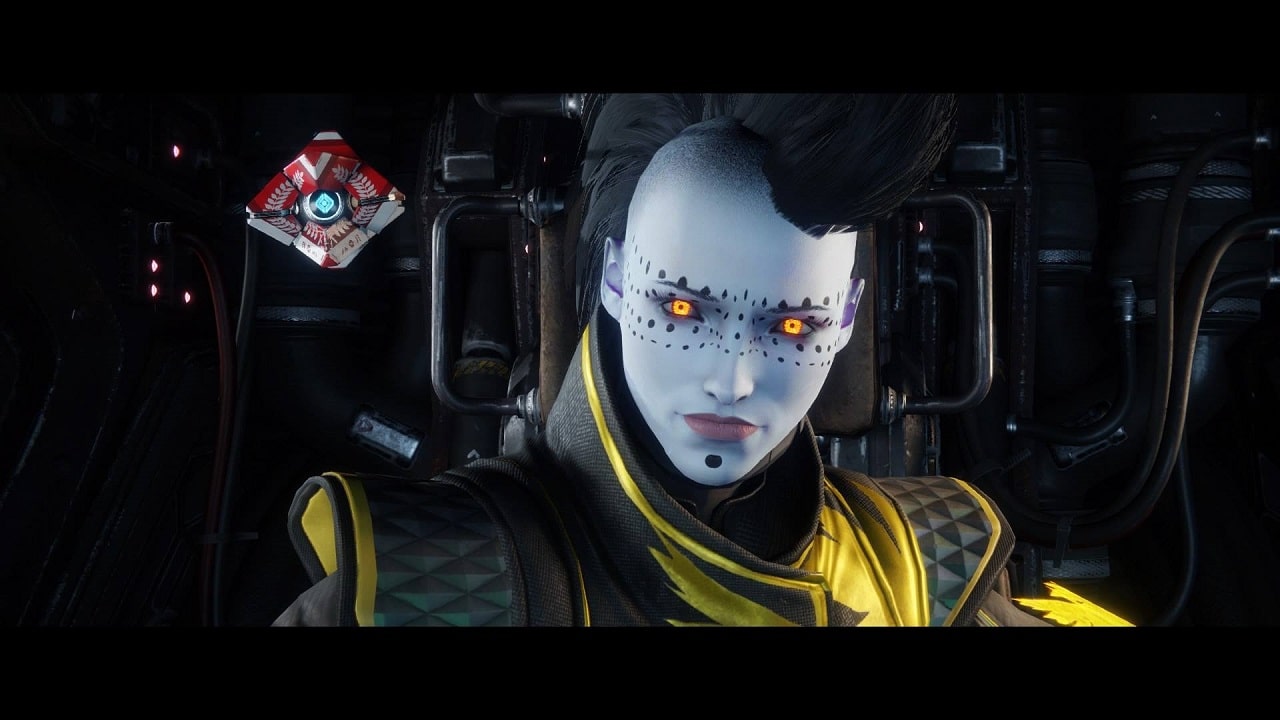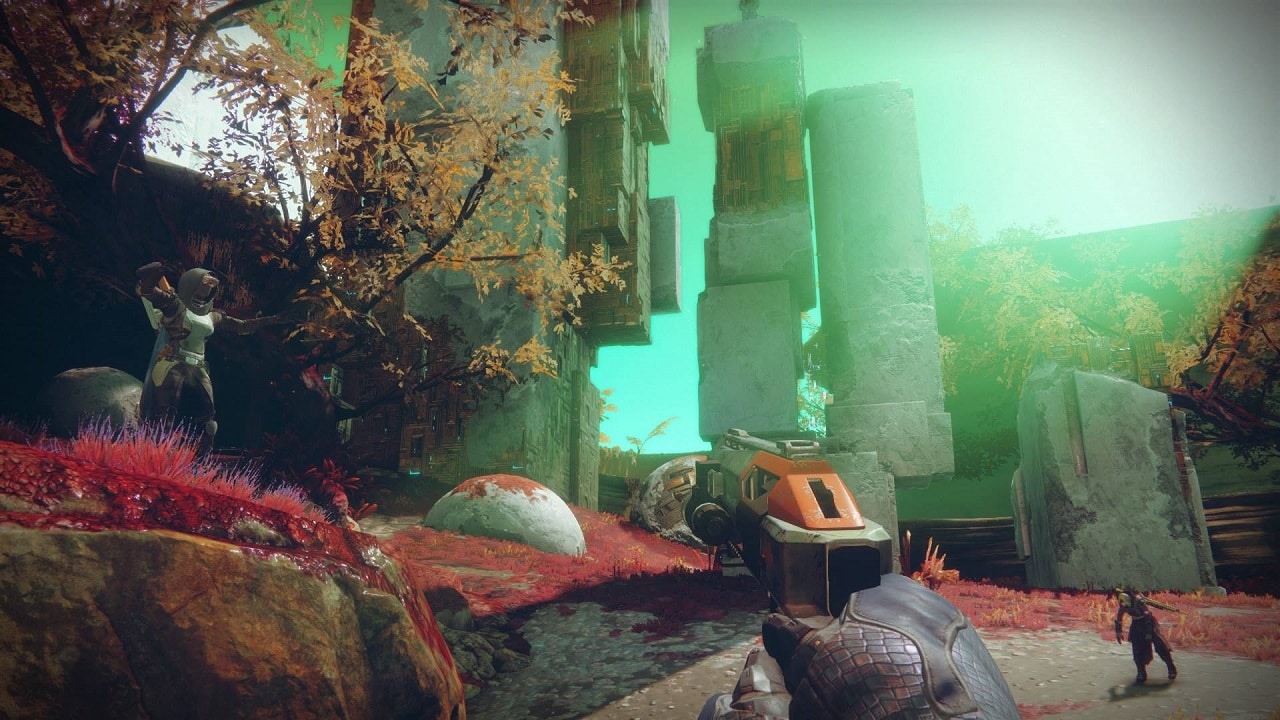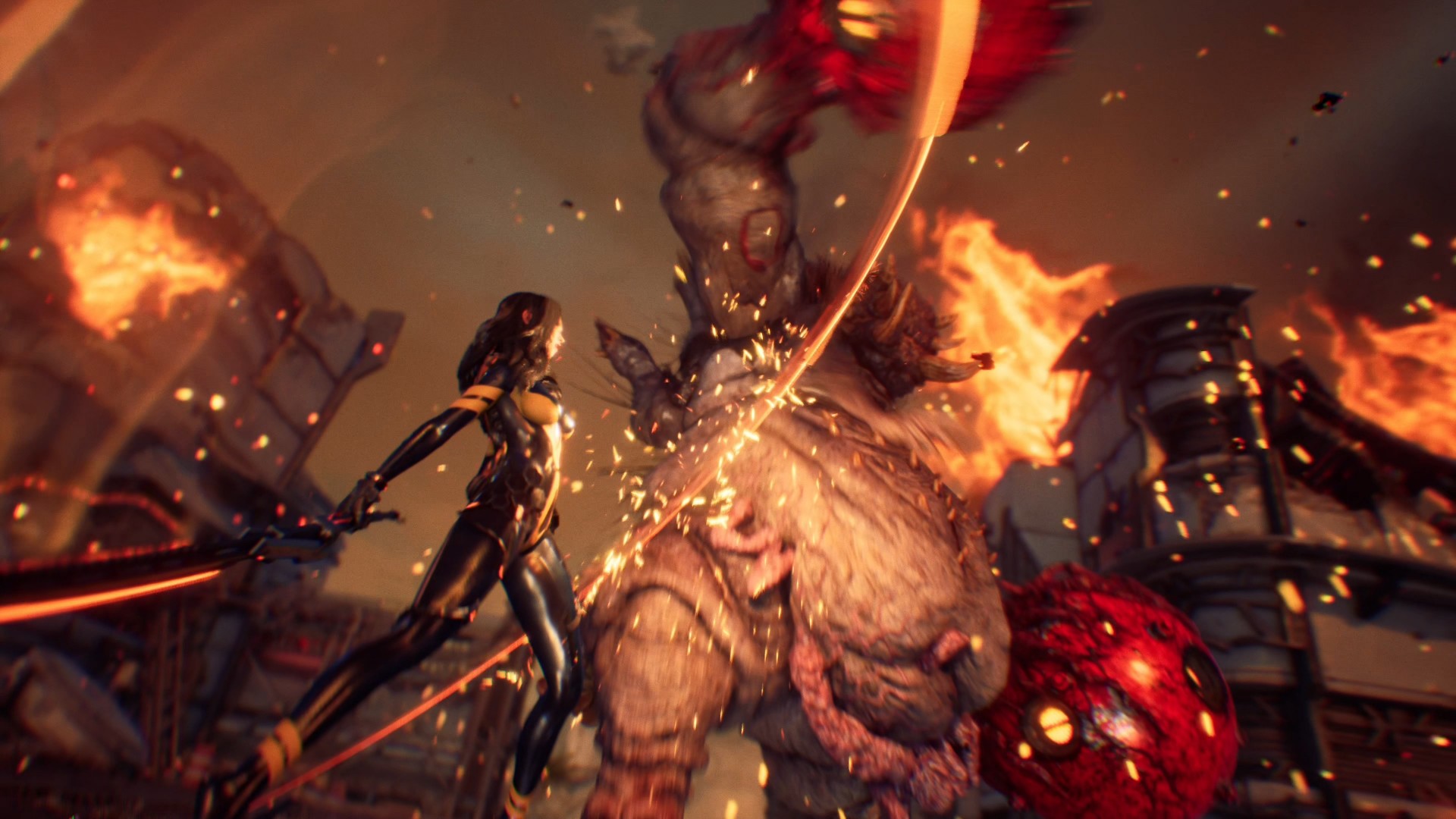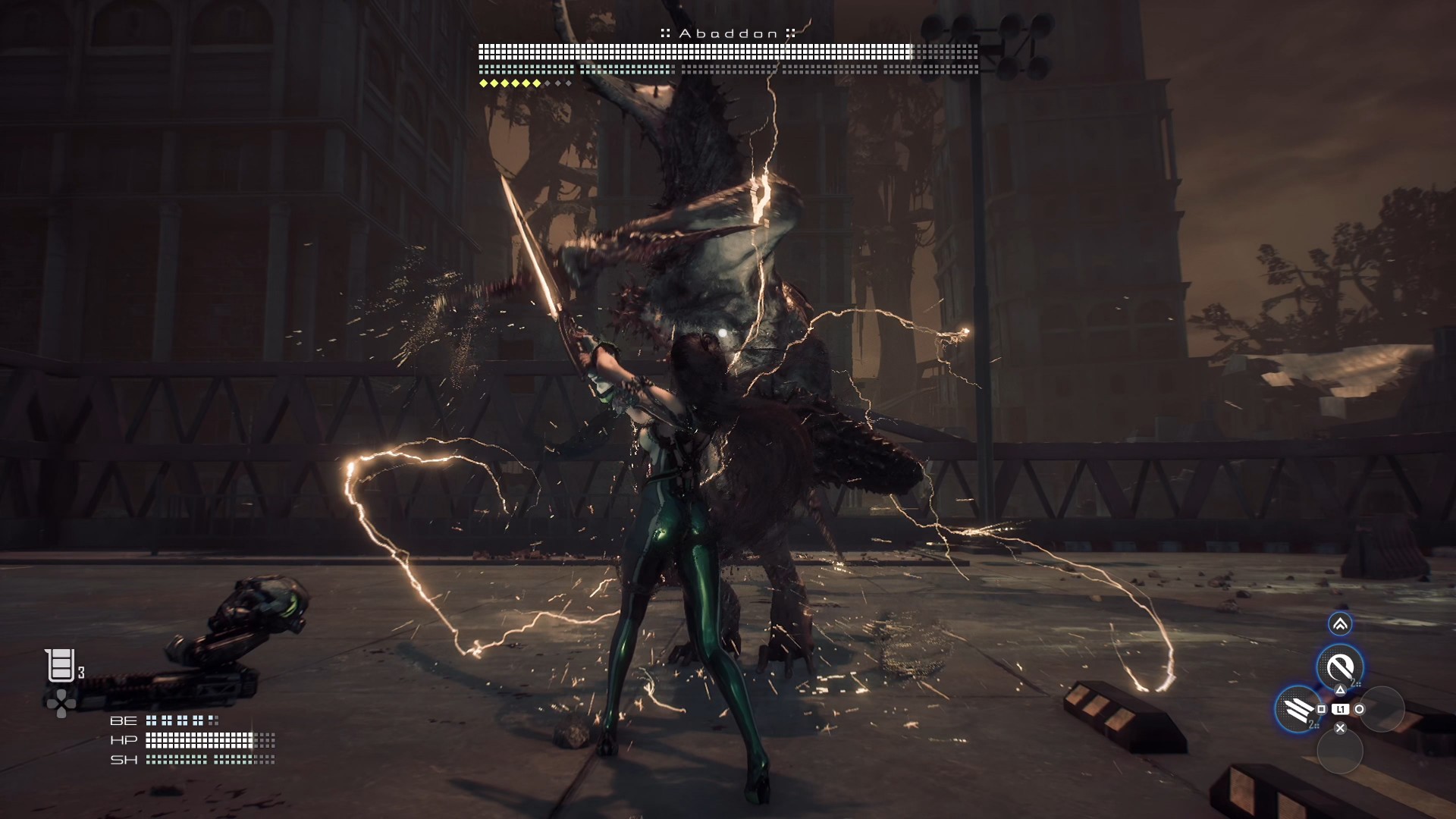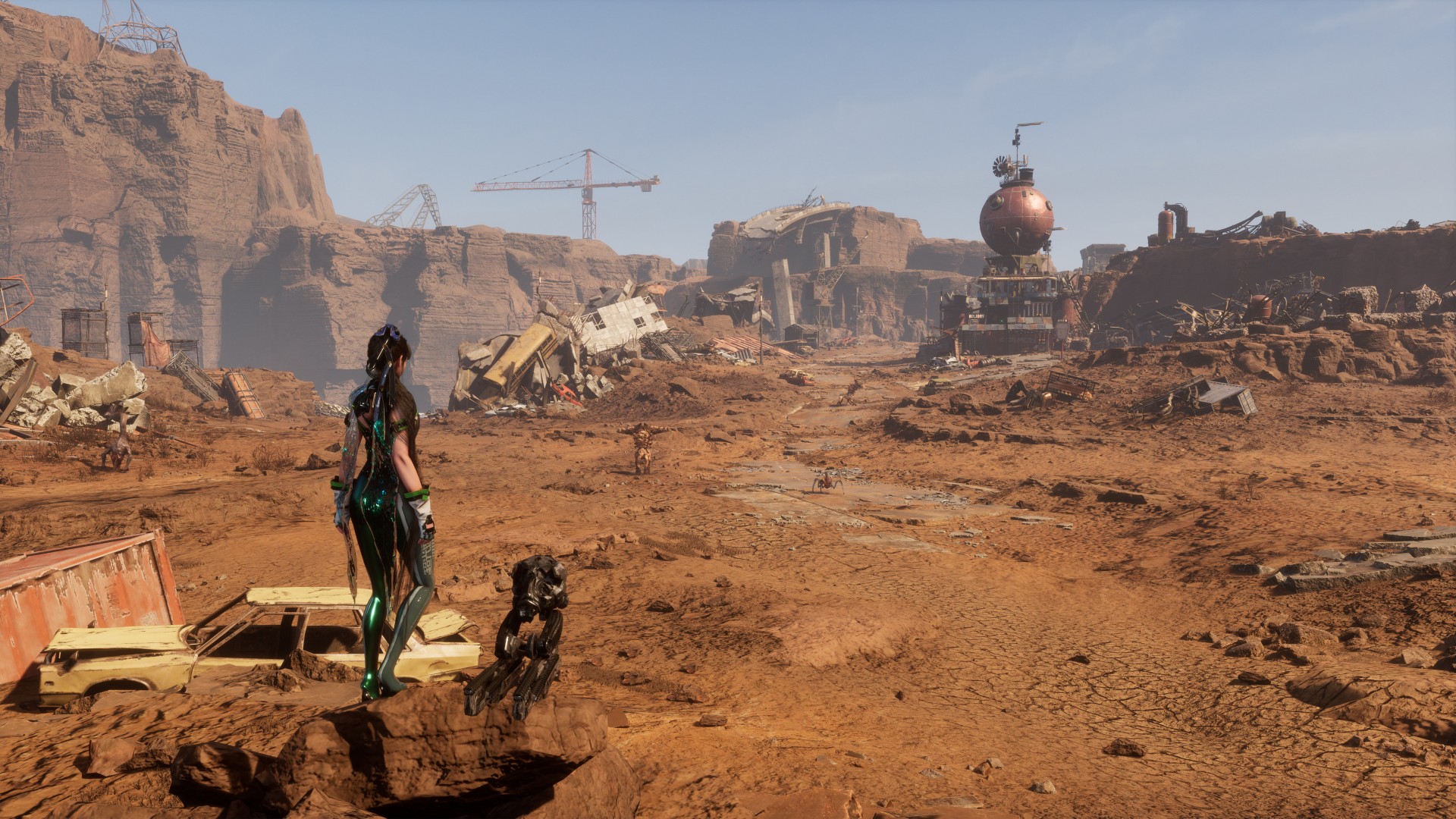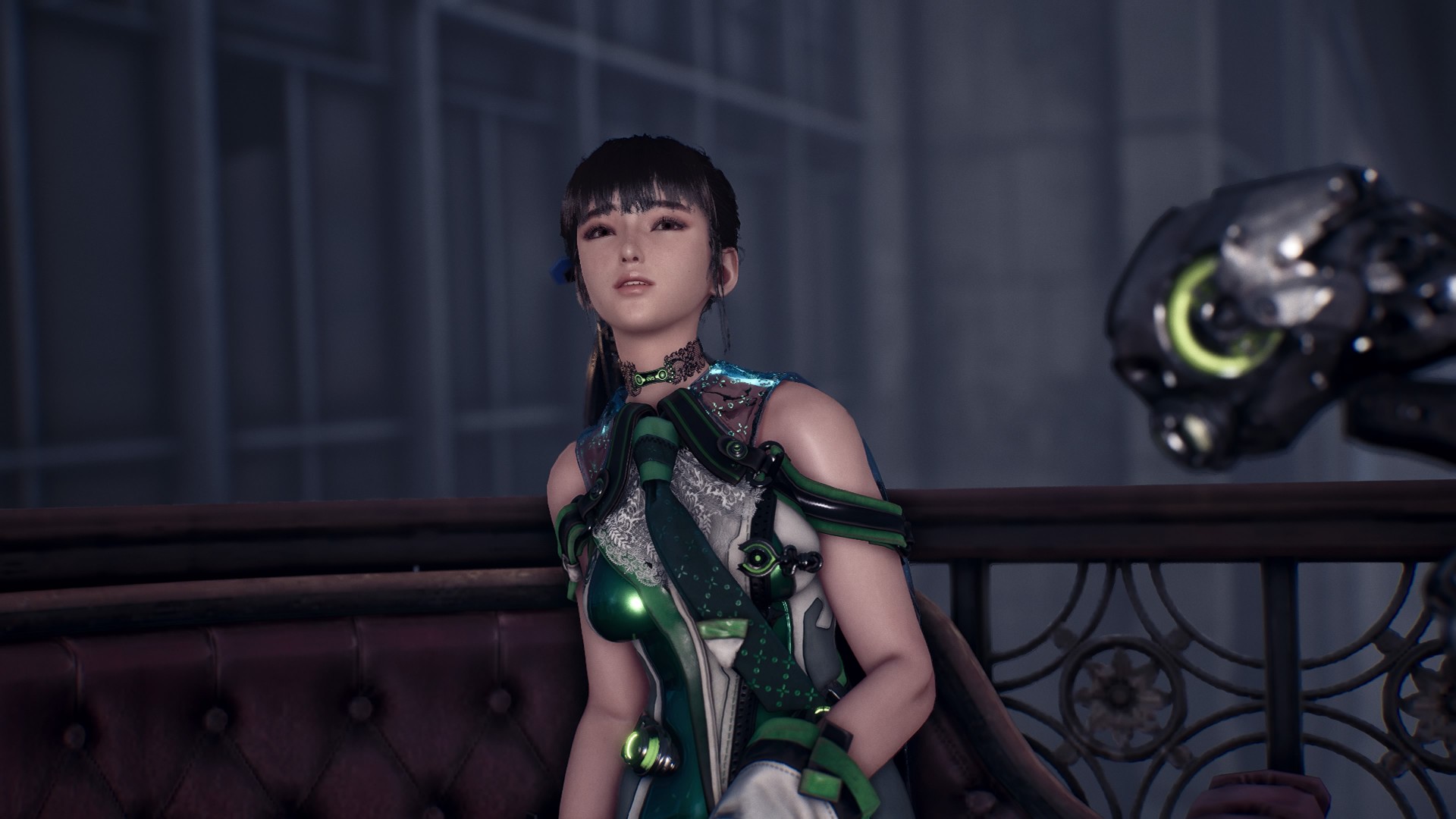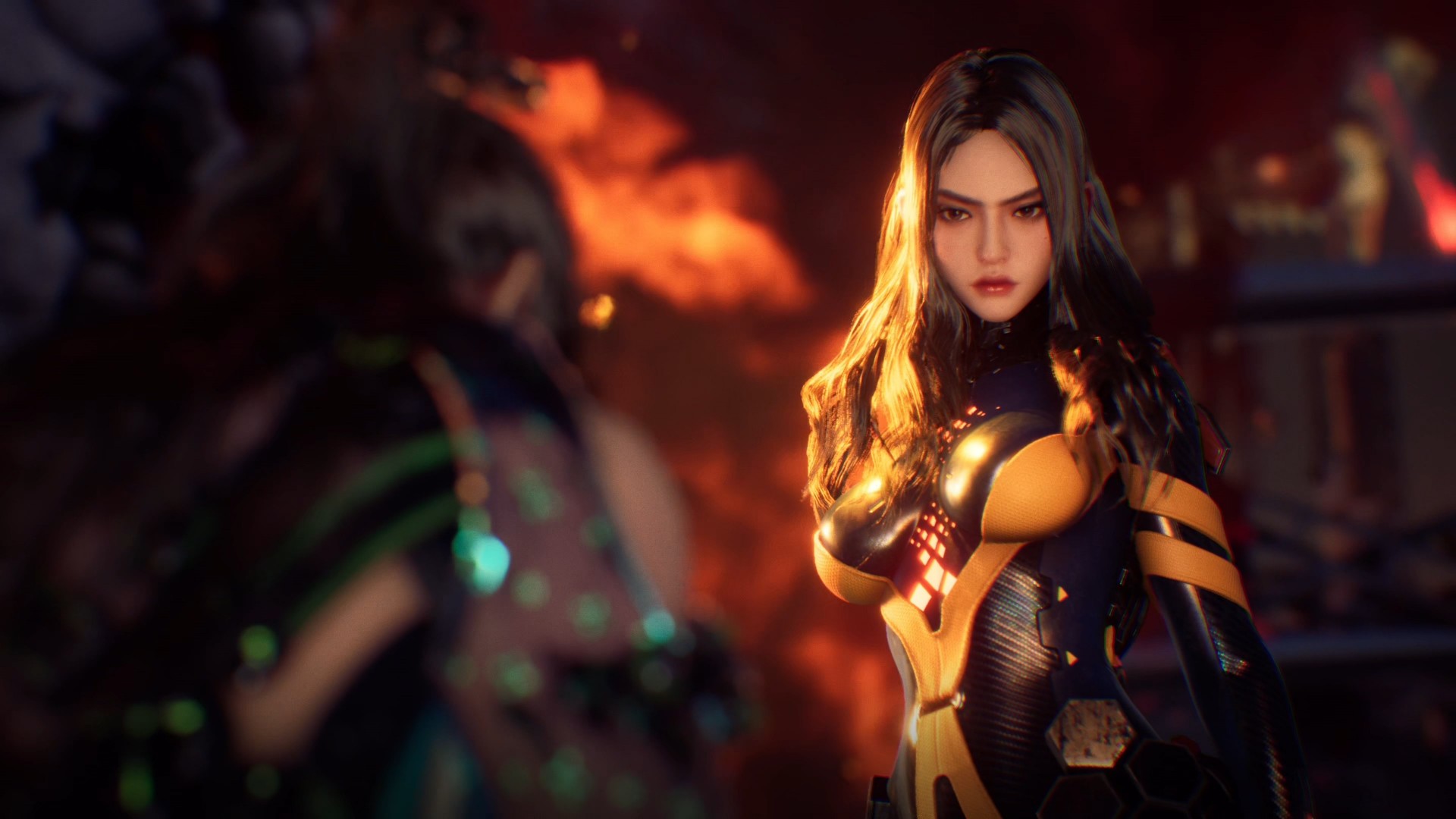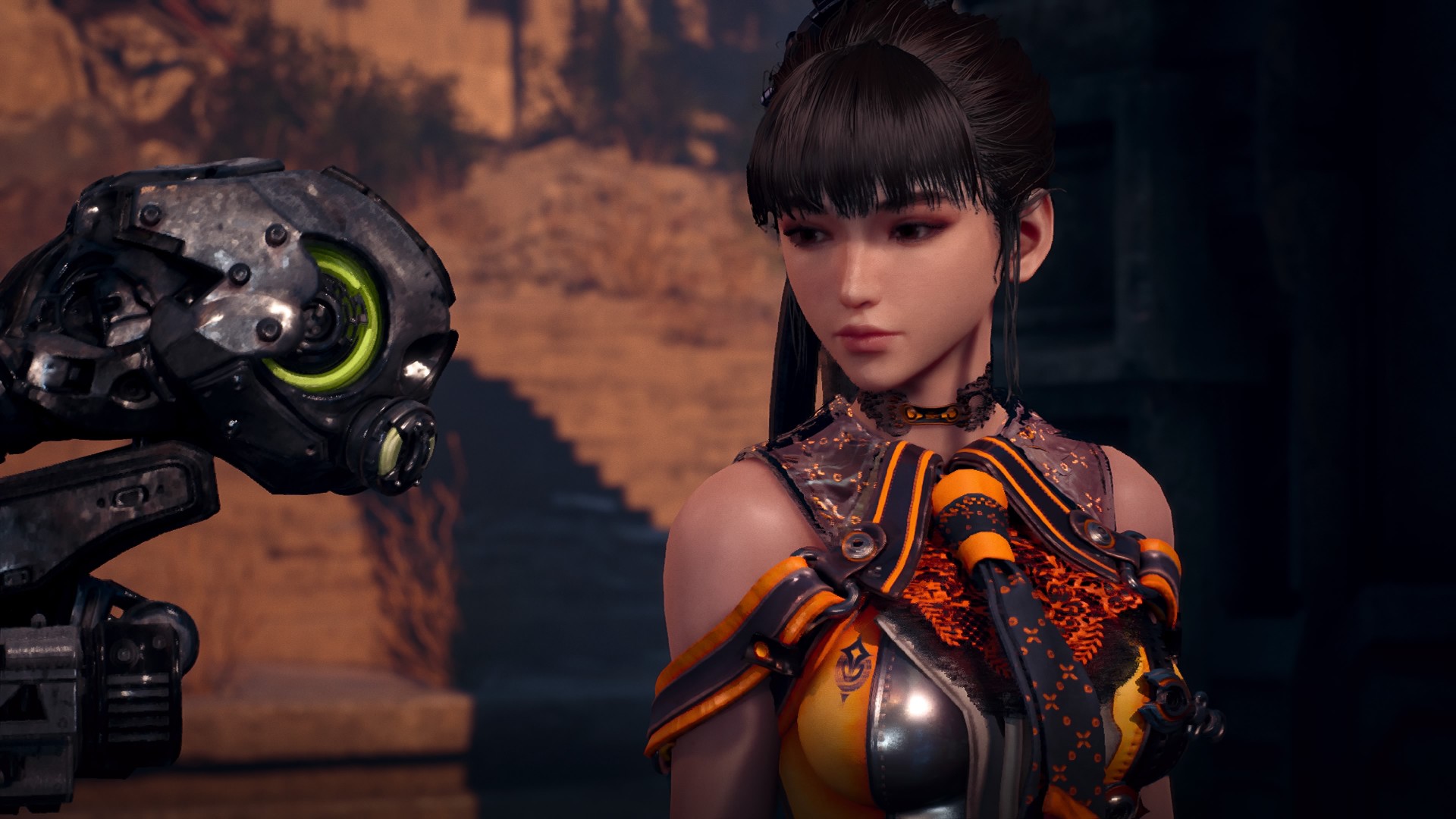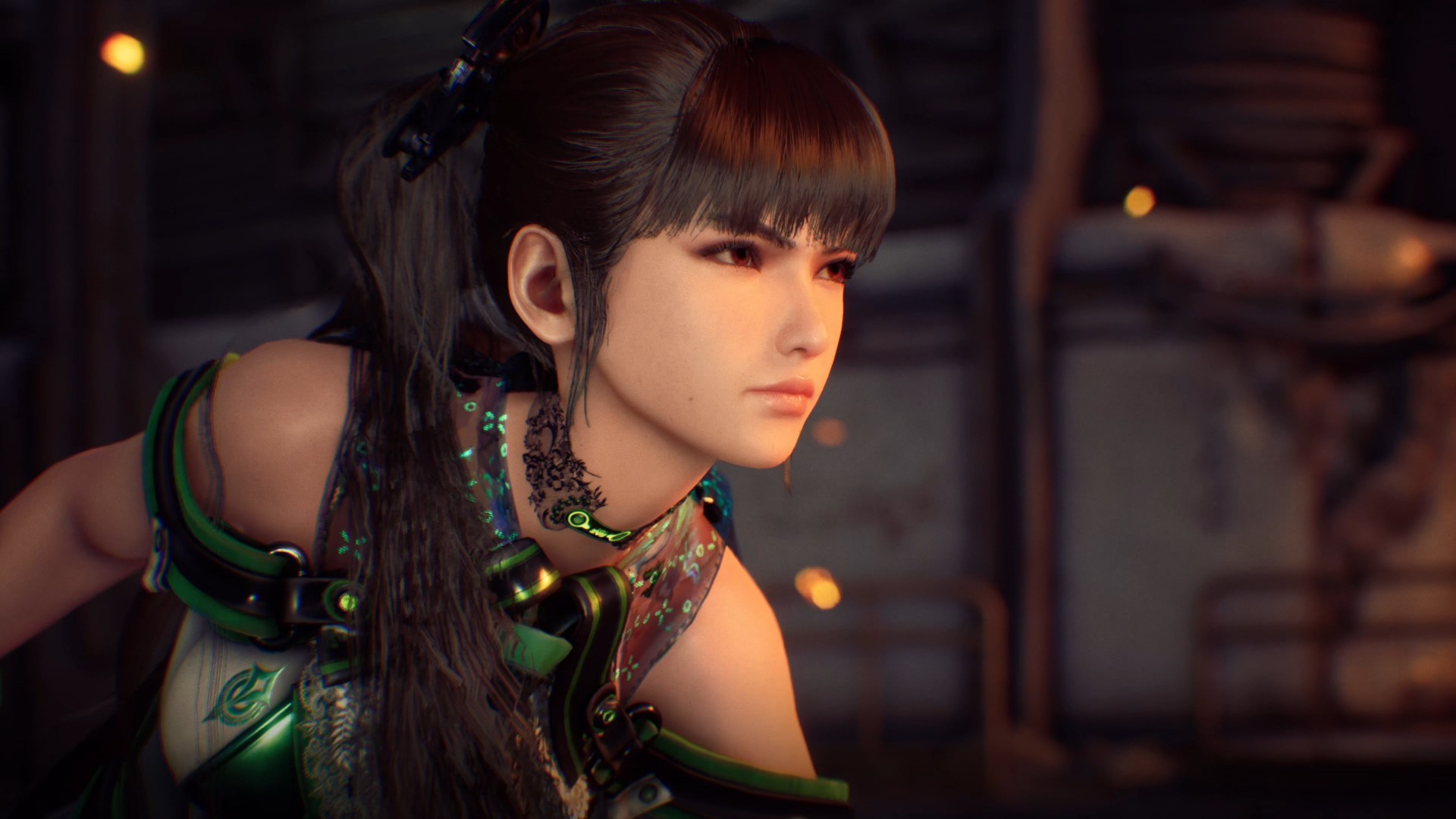Gaming
Destiny 2 Review: A Superior Smorgasbord of a Sequel
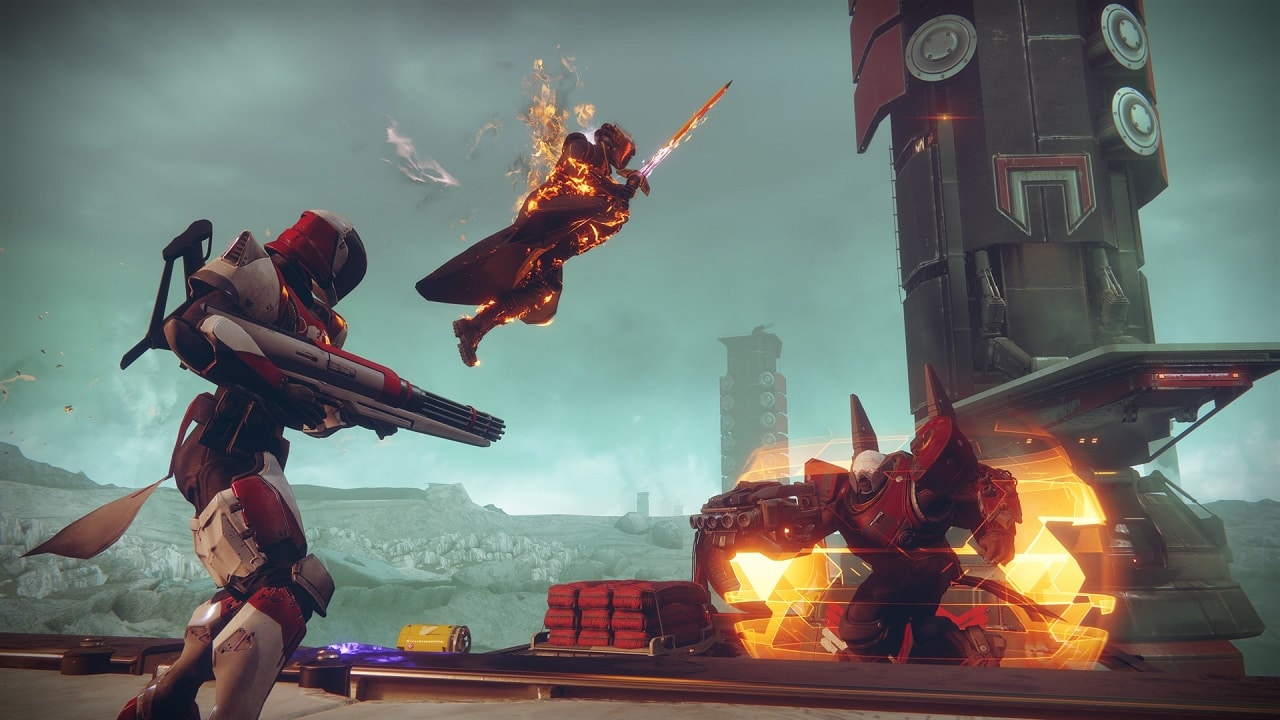
The first Destiny was one of the biggest games in 2014, but with its massive following also came plenty of complaints among critics, consumers, and even from the most diehard fans. Destiny 2 aims to address each problem, and succeeds more often than it fails.
Destiny 2 is an online-only sci-fi first person shooter. Its release comes with a ton of baggage. Despite winning awards and garnering a large, dedicated fanbase, the first Destiny took a lot of criticism for its non-existent story, lacking content, convoluted level progression, and tedious grinding. The expansions alleviated some of those of problems, but expectations were understandably high for a full-blown sequel to improve on those aspects and then some.
There’s a lot from the first game directly carried over, with a couple of tweaks. You still have the three classes to choose from: the tanky Titan, the agile Hunter, and the spell-casting Warlock. Each one has the same three subclasses based on the familiar elements of Arc, Solar, and Void. You’re fighting the same alien races: the scavenging Fallen, the mystical Hive, the AI Vex, the militaristic Cabal, and the intradimensional Taken. It’s a bit disappointing to see nothing majorly new in these departments, but at least the essence of playing as those classes and battling those enemies still feels good.
More story to see
Destiny 2 makes it loud and clear from the start that Bungie, the series’ developers, heard the gripes about the storytelling in the first game. You’re thrown right into action the moment you start playing. As one of the virtually immortal, superpowered Guardians of the Last City on Earth, you have to stave off a surprise invasion of your home from an alien army seeking to control the source of your celestial strength; Light, as the game calls it.
It’s a whole spectacle filled with characters firing off rounds and dramatic dialogue alongside you, spaceships doing battle across a laser-lit skyline, and a big bad boss alien that’s half-Bane and half-Darth Vader, speechifying as it robs you of your power. That opening sequence alone feels like more than anything the first game showed story-wise in its entirety.
The premise of depowering the Guardians, the gifted group tasked with defending the solar system from hostile forces, would have been an interesting setup for a game that’s not a blockbuster tentpole title. Like a lot of AAA action games, Destiny 2 at its core is a power fantasy. So it’s no surprise that this initial conflict for the player is resolved immediately. It wouldn’t be much of a high-octane adventure if you couldn’t access your supernatural abilities and wield an arsenal of guns and explosives and blades ASAP!
As for the rest of the non-player characters robbed of their Light, their doubts and vulnerabilities are relegated to small moments and aren’t explored past your early interactions with them. It’s a shame, really, as the plot would have felt more meaningful if it didn’t wrap up so cleanly and conveniently.
The campaign’s saving grace is that it has awesome set pieces sprinkled throughout the levels. You’ll be gawking at the expansive landscapes and elaborate interiors of the outer space worlds you go to, that is, when you’re not running and jumping around machine-gunning legions of baddies and flinging lightning storms or burning hammers at gigantic bosses.
Satisfying side activities
If you’re still hankering for bits of narrative to chew on, the whole new Adventures are meaty little side stories. These mini missions flesh out the NPCs of the level you’re in, and you also learn more about the Destiny universe. They take you to sections of the sprawling levels the campaign doesn’t lead you through.
Whether it’s crashing a demonic chanting Hive concert or preventing the Taken from assimilating the time-traveling Vex, you discover separate plot threads that weave into the bigger narrative tapestry of the series. Along with the many Lost Sectors hidden in every area that contain loot guarded by powerful enemies, the Adventures give you more reasons to explore.
Making your way to tackle these content, you’re likely to come across Public Events. These are live timed combat encounters with unique objectives that happen in public spaces. Since Destiny 2 is an always-online game, you’ll see other players roaming the areas doing their own thing. While story content is limited to three players partying up, anyone within proximity of an ongoing Public Event can seamlessly join the action. And boy are these events bursting with action.
Apart from just being a joy to play with their challenge tuned for multiple people, Public Events also dole out substantial rewards, especially when optional goals are accomplished, incentivizing participation. This leads to chaotic firefights that can then lead to impromptu coordinated firing squads against alien hordes. Blasting rockets at spider tanks and destroying mining drills in tandem with strangers is exciting with the unspoken camaraderie.
Post-game play
If you’re looking for something more mechanically and tactically demanding, Strikes and their Nightfall versions await you after you beat the campaign. These are equal to the length and scale of the biggest story missions, but surpass them in terms of complexity and difficulty. Such operations will have you running through cordoned off dungeons and arenas, completing tasks like hacking terminals or smashing magic crystals while fighting off waves of enemies, and culminating in multi-stage boss fights. Nightfalls are modified Strikes, adding layers like damage multipliers and time extensions for a more challenging experience.
While you can finish the campaign by yourself, Strikes and Nightfalls require teamwork. The former automatically groups you with two other players if you’re not already in a party of three. For the latter, you need to either find two people to join your group or start up Guided Games.
Guided Games lets you matchmake with players from a Clan. Clans are basically communities players can set up and join, making it easier for like-minded Guardians to help each other and gain rewards.
For the hardcore
Rounding out Destiny 2’s cooperative content is the Raid. It’s the biggest, most intricate, and most difficult mission in the game, needing six players actively communicating and playing specific roles to complete. It can take hours spread across numerous gaming sessions. Only the most dedicated gamers will finish it, as the coordination, time commitment, and skill it demands are leagues above everything else in the game. For those who can answer that call, it’s worth the effort to see its visual splendor, conquer its challenges, and forge bonds with friends and even total strangers.
Lastly, there are player-versus-player modes for those looking to test their mettle against fellow Guardians. In the Crucible, two teams of four face off in dedicated PVP maps, with different objectives to achieve victory. There’s a more relaxed Quick Play mode if you just want to fight other people. Competitive mode sets goals that ask for more teamwork, while the Trials of the Nine invites the best of the best with fixed match setups for less randomness and more skillful play.
Overall, it’s a much slower version of Destiny’s Crucible, with the smaller maps and teams encouraging methodical collaboration over individual ability.
Loot lust
Tying all of this content together is the drive to get loot. Stronger weapons, tougher armor, and just cooler looking gear; Destiny 2 showers you in loot no matter what you’re doing. The rate at which you get high-tier equipment is vastly increased from the first game. How you get better loot is way more streamlined too, cutting down the dizzying number of currencies and upgrade materials from Destiny to a more manageable number.
You’ll be reaching the upper limits of your power level so much faster, and doing so gives you access to endgame content earlier. Being locked out of Nightfalls and Raids in the first game because of the boring grind and poor loot drop rates has been completely remedied in this sequel.
The only glaring problem is how shaders, the color modifiers for your gear, are used up when you apply them. You can earn them through a slow drip-feed from just playing the game. However, it’s easy to get tempted to pay real money for the blind boxes containing these cosmetics. Options are welcome, but you’ll feel the effect of these microtransactions soon enough. When you start hesitating to customize your character, fearing that you’ll have to grind to find those shaders again, it just sucks.
Destiny 2 is a behemoth of a game. It’s chockful of content with more to come in the free updates and the two major expansions. Casual players will have more than enough to consume over 25 hours, while hardcore gamers can easily spend upwards of 50+ hours taking on recurring weekly challenges and optimizing their gear. Either way, it’s a great time that can be made all the more memorable with friends to play with.
Destiny 2 is out now on the PlayStation 4 and Xbox One, with a PC version coming out on October 24. PlayStation Plus and Xbox Live Gold are necessary for 90 percent of the game.
SEE ALSO: 8 PS4 multimedia features you must try out
[irp posts=”18428″ name=”8 PS4 multimedia features you must try out”]

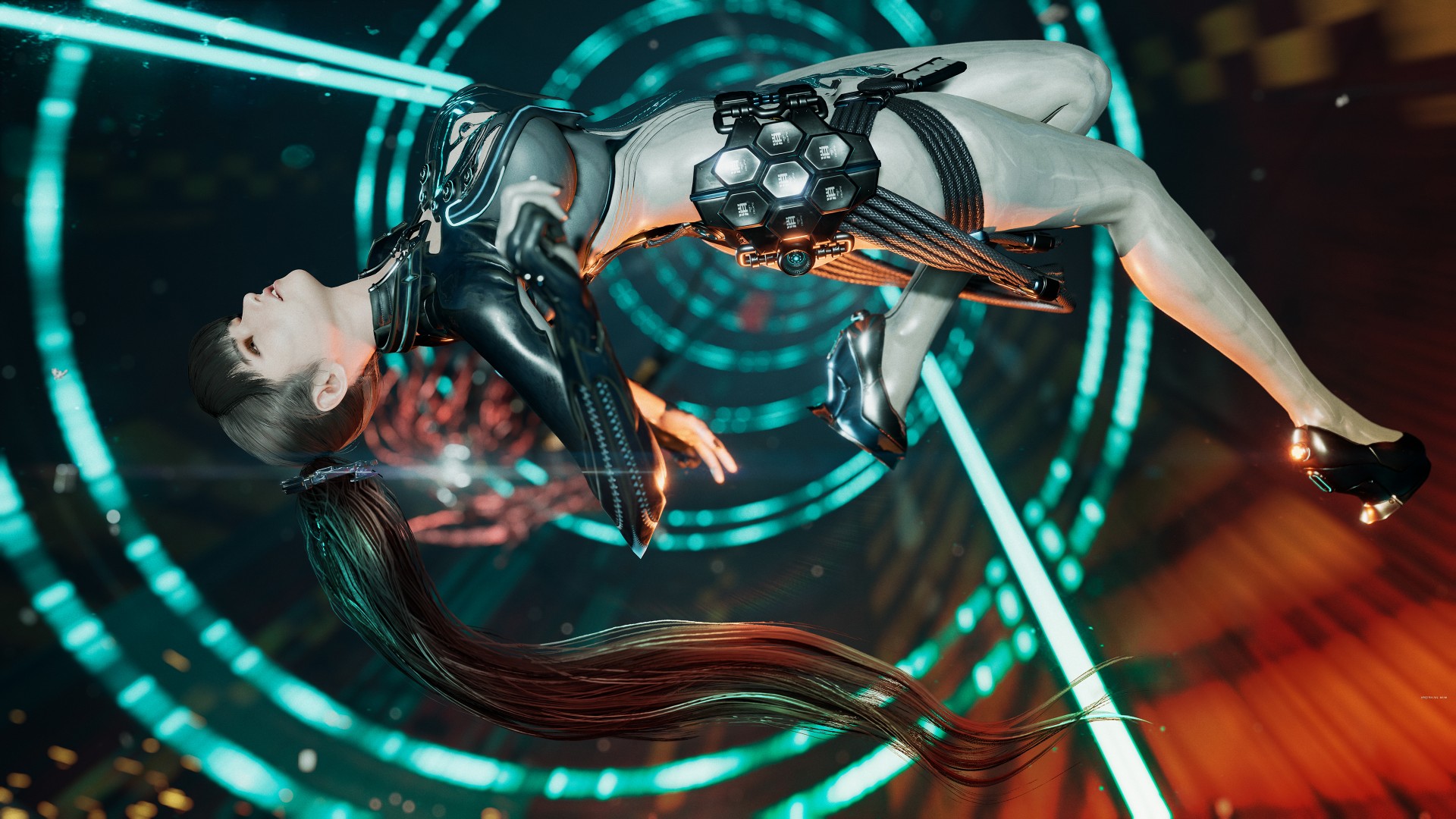
We didn’t have the best impression of Stellar Blade after spending time with the demo. Unlike certain players who poured a full game’s length of hours playing, our reception was lukewarm due to various reasons. But after finally having some time to focus on it, we now have a better understanding of its charm–and that goes beyond character design.
The game’s director has been ever-present in various gaming and tech news websites sharing nuggets about the game and reacting to the many comments made about the proportions of its female characters. That’s a rabbit hole we’re not diving into. Instead, we’re piggy-backing on one of his responses: Just pick up a controller and play it.
Steep combat learning curve
Stellar Blade’s combat didn’t click with us right away. But that’s because we approached it more like a hack-and-slash and not for the precise combo-parry sequence that it demands. A fellow reviewer aptly described our experience: It was a lot more “Soulslike” than we anticipated.
It took a while to get over that hurdle. For one, this writer isn’t particularly fond of Soulslikes. Skill issue. That’s tough considering a big part of this game’s charm is its combat. We can’t say that it fully clicked with us, but it certainly has its moments.
In combat, you have to pay attention not only to your enemy but also to how the protagonist, Eve, acts in different combo animations. If you’re not careful, you might find yourself getting hit during a lull in your combo.
You don’t have to memorize every single combo, although if you could, that’s certainly an advantage. We can compare the practice to memorizing combos of characters in Tekken, although at a milder rate.
Parrying is tricky but that’s not the only way to counter your enemies. One of the first skills you unlock is one that lets you get behind your enemy after they unleash a fatal attack (cued in with blue indicators) and hit back with your own counter. The animation looks so good that you’ll feel like an absolute badass every time you do it. It’s one of the moves that never got old throughout the entire playthrough.
As you progress through the game you’ll unlock ranged weapons that will expand your combat capabilities further. Hard combat enthusiasts should have a field day.
For more casual players, there’s no shame in switching to Story Mode which is what we did for about 70% of the playthrough. It’s easier, sure. But it can still present challenges especially during certain encounters.
The boss battles are TOUGH
We’re going to chalk this up again to skill, and perhaps patience, issue. But Stellar Blade’s boss battles are incredibly tough. Not to the point that you’ll want to throw your DualSense controller though.
What can make it frustrating is that the patterns of the enemies, especially the earlier bosses and mini-bosses, are easy to track. But they’re not exactly easy to deal with.
Parrying becomes an even more critical skill in these encounters. It’s one of the reasons why we opted to slide down the difficulty. Otherwise, this writer will never finish the game.
Pulling from different games, worlds
We have seen many compare Stellar Blade to the Nier games. Other than the setting, another big contributing factor in that comparison is the soundtrack.
During roaming, exploring, and combat, the music will change from time to time. However, they stick to this theme that’s a little eerie. It’s hard for us to describe but it’s almost like a crescendo that never quite swells up. It matches the game’s world perfectly — it feels hollow and devoid of life but still has a sliver of hope.
Combat isn’t the only thing you’re doing here. While it’s mostly linear at first, Stellar Blade offers a healthy mix of exploration, platforming, and puzzle-solving.
The puzzles don’t get in the way of the pacing. They’re quite engaging and offer a decent level of challenge. Roaming and exploration will yield you loot to improve your gear and stats. Occasionally, a Naytiba (the game’s primary foils) will surprise you for a good jumpscare moment.
Stellar Blade doesn’t reinvent anything nor does it offer anything particularly new or groundbreaking. But everything it borrowed from other games is retrofitted to match the game’s vibe and overall aesthetic. The result is a polished experience of familiar gaming mechanics.
Eve
Another aspect that did not grab us as much during the demo is the main character, Eve. The first hour of the game doesn’t do much to endear the player to her.
That slowly changes as you play through the game. Through a mix of cut scenes and world-building collectibles, you get a better sense of what Eve is, her mission, and ultimately her purpose.
If you’re familiar with the animé Violet Evergarden, Eve and that show’s protagonist share a similar character arc. They initially seem one note and bland, but the layers are peeled back as you learn more about them and how they relate to the world and the people around them.
Is she hot? Hell yeah. But as cliché as it is, she’s certainly more than what meets the eye.
Should you play Stellar Blade?
Unlike the PlayStation 5 exclusive that immediately preceded it, Stellar Blade has plenty in common with past PS5 exclusives — visually captivating, cinematic experiences, with satisfying gameplay.
Its level of challenge is closer to Sekiro and Bloodborne but it’s also not quite as difficult. In the same category but certainly not in the same stratosphere.
It also has an alluring charm that goes beyond its aesthetics. As mentioned earlier, nothing about it is particularly new or groundbreaking. But it’s polished and cohesive. There’s something about the overall feel of the game that draws you in and makes you want to see it through.
Stellar Blade is a Day 1 purchase if you’re up for the challenge. And if you consider the game director’s goal of having a high quality AAA console game from South Korea which is dominated by PC and mobile gaming, we say they did just that. Now, it’s just up to us to pick-up the controller and play.
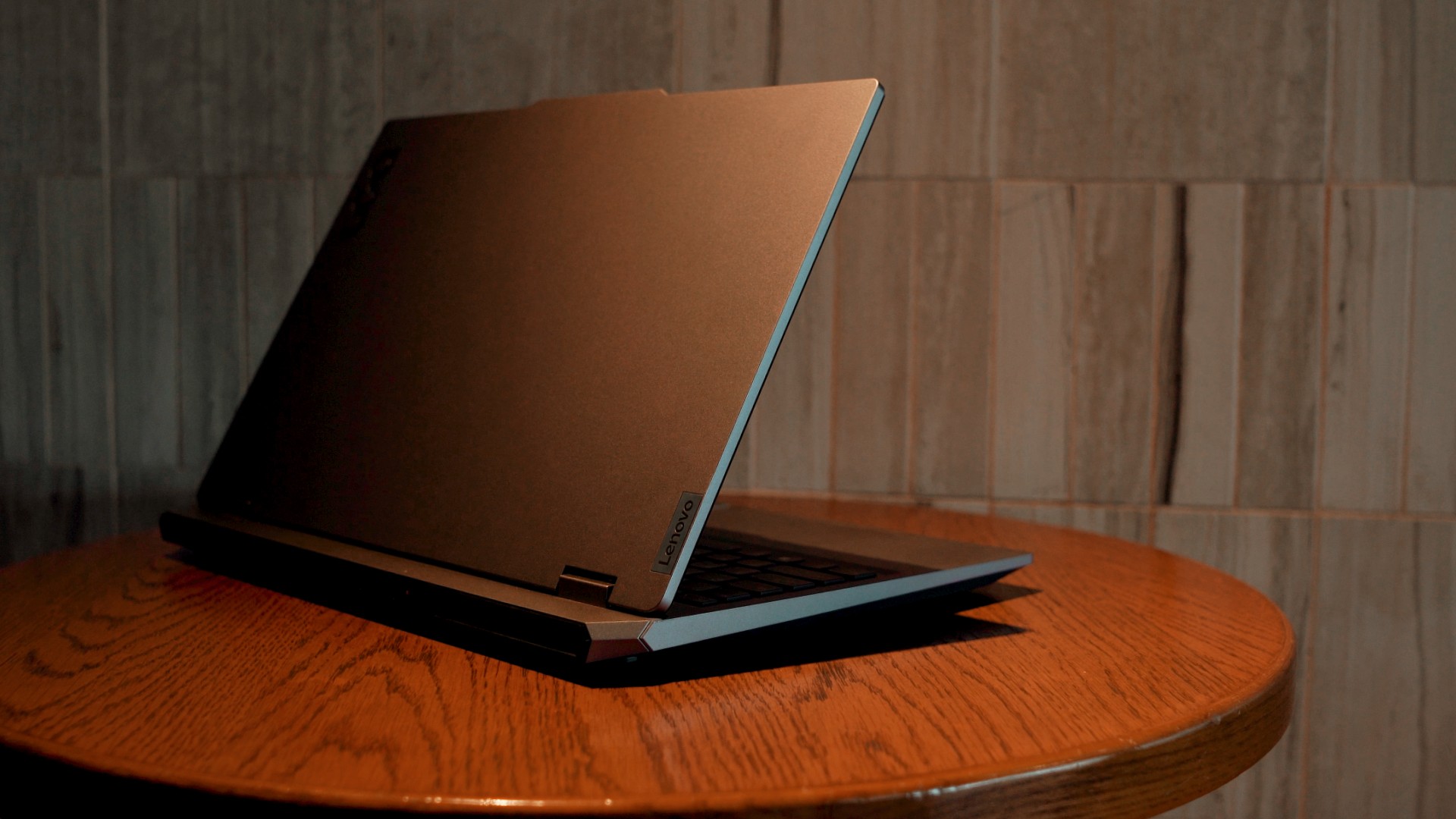
Get your game on with the Lenovo LOQ 2024. This capable laptop is your entry point to PC Gaming and a lot more.
It comes an absolutely affordable price point: PhP 48,995.
You get capable hardware and the hood to support gaming and more. The Lenovo LOQ 15IAX9I runs on the 12th Gen Intel Core i5 processor and Intel Arc Graphics.
Those are key to bringing unreal graphics to this segment. Supporting latest tech like DirectX 12 Ultimate, players are able to enjoy high frame rates on the Lenovo LOQ.
Creating content? It comes with AI Advantage to help boost performance. Engines and accelerators boost the media processing workloads especially for creatives. It also works with Intel’s X Super Machine Learning, Leading to images that are as close to reality.
The laptop supports a configuration of up to 32GB of RAM and 1TB of SSD Storage.
As for its display, the device has a large 15.6-inch, Full HD panel that is more than enough for gaming, video editing, content consumption, and whatever else you do on a laptop. This display has 144Hz refresh rate, 300 nits brightness, and anti-glare.
Videos come out clear, crisp, and realistic. Audio is punchy and as loud as it gets. Windows Sonic elevates it more when you use headphones. And it just takes a few minutes to render HD videos on editing software.
As it runs on Windows 11, if you are going to use it for work, you can take advantage of various features. The Lenovo Vantage Widget is there for constant reminders, Copilot will help you organize your tasks, and Microsoft Edge is there for casual browsing.
There is an assortment of ports at the back for easy connectivity. And as this is meant for gaming, we put it to the test. Racing that looks better with high frame rate? Check. Shooting titles that require heavy work? Not a problem. You can play all your favorites and not worry about performance.
Best of all, it takes less than an our to juice up this laptop all the way to 100%.
So, whether you’re looking to get started with PC Gaming, or an upgrade for work and entertainment needs, the Lenovo LOQ has you covered.
This feature is a collaboration between GadgetMatch and Lenovo Philippines.
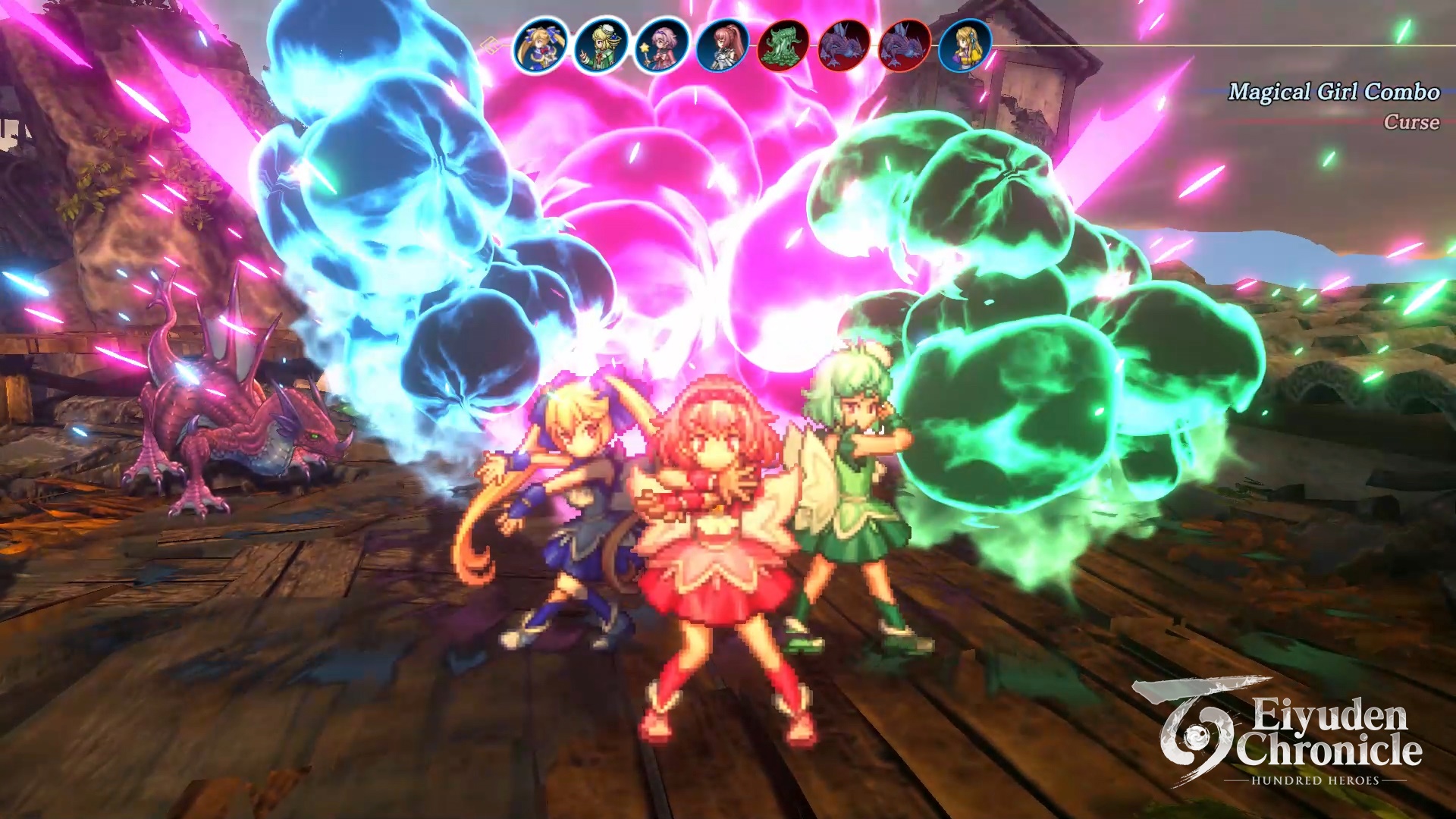
Rabbit and Bear Studios and 505 Games’ Eiyuden Chronicle: Hundred Heroes is now available across multiple platforms. One of the most anticipated JRPGs in recent memory may now be played on PlayStation 4, PlayStation 5, Xbox X|S, Xbox One, and Nintendo Switch. Moreover, it may be accessed on PC via Steam, the Epic Games store, and GOG.
Eiyuden Chronicle: Hundred Heroes is crafted by game developers Junko Kawano (Suikoden I, IV) and the late Yoshitaka Murayama (Suikoden I, II). The title features a modern take on classic 2D side-scrolling games. It has a six-character battle system, meticulous 2D sprites and 3D backgrounds, and a riveting story. As the name suggests, you can play over 100 characters.
GadgetMatch had the privilege of playing the game’s early preview here: Eiyuden Chronicle: Hundred Heroes First Impressions
The refreshed environment immediately stands out. There is more detail, depth, and movement compared to how side-scrolling games of the past used to be played. The game lets players choose their party mates. Meanwhile, the actual combat is turn-based, giving players room to strategize what sequences or gimmicks to select.
With more than 100 characters to choose from, the game also allows players to appropriately select heroes fit for certain regions and dungeons throughout the story. Moreover, some are designated catalysts that can give you access to more of the world’s treasures. In between, users may enjoy mini-games, like the fishing side quest in the preview. The collected fish can be part of another mini-game — cooking — as ingredients for recipes you can cook with.
-

 Features2 weeks ago
Features2 weeks agoFortify your home office or business setup with these devices
-

 Reviews1 week ago
Reviews1 week agorealme 12+ 5G review: One month later
-

 Gaming2 weeks ago
Gaming2 weeks agoNew PUMA collection lets you wear PlayStation’s iconic symbols
-

 Accessories1 week ago
Accessories1 week agoMarshall Major V: Reasons Why I Love It
-

 Gaming2 weeks ago
Gaming2 weeks agoMore PlayStation 5 Pro specs have been leaked
-
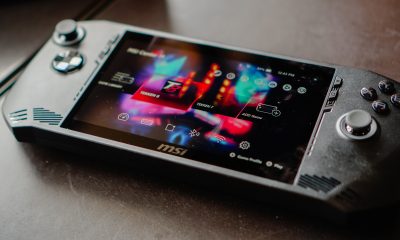
 Features1 week ago
Features1 week agoWhy choose the MSI Claw?
-
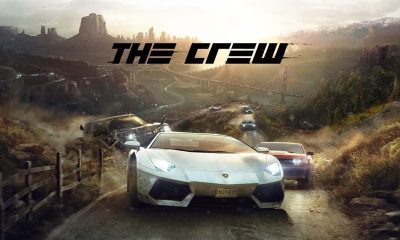
 Gaming2 weeks ago
Gaming2 weeks agoUbisoft is taking away copies of The Crew from your library
-

 Gaming2 weeks ago
Gaming2 weeks agoOne Piece Odyssey coming to Nintendo Switch



